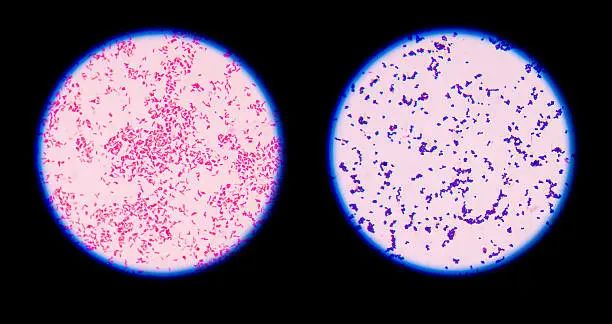
For hundreds of thousands of years, humans have suffered from bacteria, and antibiotics as antibacterial agents have saved millions of lives. However, with the widespread use and even misuse of antibiotics, the problem of bacterial resistance to antibiotics is now very serious and antibiotic resistance is posing a threat to human health worldwide. Therefore, the development of new antibiotics is imperative. Researchers are exploring the antibacterial effects of industrial hemp, which may become a potential new force in the antibiotic field.
As modern humans we are fortunate - modern times have long since developed drugs to kill one of our oldest enemies - bacteria, bearing in mind that in the past, bacteria caused the death of large numbers of people. In the United States alone, antibiotics save over 200,000 lives each year.
Humans are adaptable and able to overcome difficulties, and this same ability is shared by bacteria, which are mutating and developing resistance. Researchers are now looking at new sources of antibiotics to combat this threat, and the development and application of industrial hemp in the field of human antibiotics is already urgent.
Importance of antibiotics
Antibiotics are an important weapon in our fight against ancient microbes. Although not all microscopic organisms cause disease - the human gut, for example, contains trillions of bacteria and viruses that help us digest food and boost our immune system. But many other kinds of microbes do not exist in the human body in this symbiotic way.
There are countless species and strains of infectious bacteria. These organisms can enter the human body in a variety of ways, including contact, airborne and droplet transmission.Consumption of undercooked food is a common way of causing bacteria to invade the body.
And any part of the body can be infected. Bacteria themselves cause disease, and the body responds to their invasion by exhibiting symptoms. The pathogenicity (potential to cause disease) of bacteria varies; only a small percentage of bacterial species cause infection and illness in humans, but it is this small percentage that can cause serious damage to the body.
Every organ in the body is susceptible to bacterial infection. Strains of bacteria that attack the meninges (the membranes that protect the brain and spinal cord) can cause meningitis. Bacteria that attack the lungs can cause pneumonia. Staphylococcus aureus bacteria located on the skin can usually enter the body through a wound and infect the heart valves and abdomen.
1.Brief history of antibiotics
Thankfully, through the use of antibiotics, previously fatal infections have now been turned into minor illnesses. In most cases, infectious diseases are the main cause of death. The rise of antibiotics has provided us with an effective weapon against this invisible enemy.
Humans have been using antibiotics for thousands of years. For example, traces of the use of the antibiotic tetracycline date back to 350-550 AD and are present in human bones from ancient Nubia, Sudan.
Most people associate the advent of life-saving antibiotics with Alexander Fleming and the beginning of the "antibiotic era". Fleming discovered the antibiotic penicillin while studying staphylococci. After placing a petri dish full of bacteria next to an open window, he returned to find it contaminated with mould. The newly arrived fungus had succeeded in killing the infectious bacteria. This groundbreaking discovery took place on 3 September 1928 and has since saved the lives of some 200 million people. (Alexander Fleming, a Scottish biologist, pharmacologist and botanist who became world famous for his discovery of lysozyme in 1923 and penicillin in 1928, a discovery that opened up the field of antibiotics, and who was awarded the Nobel Prize in Physiology or Medicine in 1945, along with Flory and Chinn, for their research activities on penicillin.)
2.How antibiotics work
There are four main mechanisms by which antibiotics produce bactericidal effects: inhibition of bacterial cell wall synthesis, interaction with cell membranes, interference with protein synthesis and inhibition of nucleic acid replication and transcription. Antibiotics work in two main ways: by slowing down the rate of cell reproduction (bacteriostatic), or by killing bacteria (bactericidal).
Bacteriostatic antibiotics slow down the cellular activity of bacteria, but do not cause their immediate death. They essentially suspend the bacteria's ability to reproduce, which gives the immune system ample opportunity to destroy the current infection. In contrast, bactericidal antibiotics kill bacteria directly by preventing them from forming a cell wall, which rapidly leads to their death. Penicillin antibiotics with bactericidal properties include penicillin V for sore throats, and amoxicillin for lung infections.
Antibiotics also vary depending on the type of bacteria they target. Broad-spectrum antibiotics, which work against a wide range of bacteria, include the beneficial bacteria in the gut. This can therefore lead to an imbalance in the microbiota and may cause digestive problems. In contrast to this mechanism, narrow-spectrum antibiotics are antibiotics that only kill or inhibit a limited range of bacteria.
Gram-positive and Gram-negative bacteria

Some bacteria are more resistant to the antibiotics and antibodies produced by our immune system. Gram-positive and Gram-negative bacteria are distinguished by the results of Gram staining of the bacteria. Gram-positive bacteria are those that can stain dark blue or purple with Gram stain, while Gram-negative bacteria cannot be stained.
The difference between the two types depends on their cell walls. Gram-positive bacteria have no outer membrane, only a complex cell wall, and a thick layer of peptidoglycan (proteins and carbohydrates). Gram-negative bacteria, on the other hand, have a lipid outer membrane and a thin peptidoglycan layer. Because Gram-negative bacteria have a thicker outer layer, they are usually more unaffected by antibiotics.
Although the term "antibiotic" literally means "against life", these drugs only work against a specific class of microorganisms, namely bacteria. Antibiotics do not protect the body from viruses for several reasons: firstly, viruses enter host cells to replicate, whereas bacteriostatic antibiotics do not attack host cells. Secondly, viruses do not possess a cellular structure, which renders bactericidal antibiotics useless.
What is antibiotic resistance?
The discovery and application of antibiotics has been a major revolution for mankind. Like all other forms of life on Earth, bacteria possess the ability to adapt to threats, overcome challenges and ensure their own survival. This property has enabled some bacterial species to develop resistance to antibiotics.
Just like any other organism, individual bacteria undergo random mutations. Some of these are functional, while others are completely useless. However, every so often, a mutation occurs that improves the organism's ability to adapt and survive. When some bacteria mutate, they become more resistant to antibiotics than others. As the antibiotic-sensitive bacteria die off, the bacteria with the beneficial mutation gain more resources and reproduce.
Examples of these successful mutations include the development of Staphylococcus aureus into MRSA (Methicillin Resistant Staphylococcus aureus). This bacterium has developed resistance to methicillin and penicillin and has managed to build its own cell wall in the face of these antibiotics through a genetic fine-tuning.
Looming threat of antibiotic resistance
The World Health Organisation (WHO) considers antibiotic resistance to be one of the greatest threats to global health and development. Although antibiotic resistance occurs naturally, the WHO states that the misuse of antibiotics in humans and animals is a major factor contributing to this process. As a result, infections such as pneumonia, tuberculosis, gonorrhoea and salmonellosis are becoming more difficult to treat.
Individuals can help curb this by taking only antibiotics prescribed by medical professionals and by not taking antibiotics when they are not needed. Medical professionals can also help slow the rate of antibiotic resistance by refusing to over-prescribe these drugs.
Researchers are looking for new forms of antibiotics that can tackle mutant strains. But where to look? Many are looking at industrial hemp as a potential source of new antibiotics.
Could industrial marijuana be a potential antibiotic?
How can a naturally occurring plant stop bacteria from mutating? Firstly, antibiotics come from fungi - a group of naturally occurring organisms. Secondly, plants have battled bacteria and other microorganisms countless times over millions of years of evolutionary warfare. All these factors make industrial hemp quite effective in stopping these bacteria.
More specifically, industrial hemp plants protect themselves mainly by producing secondary metabolites. These molecules are not involved in the growth or development of the plant, but act as chemical weapons. The industrial hemp plant has a considerable number of "weapons" - more than 100 cannabinoids and more than 200 terpenoids.
Antibiotic potential for cannabinoids and terpenes
THC and CBD, two well-known chemicals that are both cannabinoids. These substances are also found in several other plants and interact with the human endocannabinoid system (a systemic network that helps regulate many other physiological systems).
Researchers have been exploring the antibacterial properties of industrial hemp extracts and cannabinoids for decades. The earliest studies were conducted in the 1950s. Although researchers observed a bactericidal effect, they were unable to determine exactly what the active ingredient was due to a lack of knowledge of the phytochemistry of industrial hemp at the time?
In 1976, researchers made a breakthrough when they found that THC and CBD had both antibacterial and bactericidal effects on Gram-positive bacteria. Studies have also tested the effects of cannabis oil on certain species of bacteria.
These essential oil preparations include new cannabinoids and terpenes, such as terpenes, citricene and basilene. Studies have found moderate to good antibacterial activity in vitro, suggesting that a combination of industrial cannabis ingredients may prove beneficial in future human studies.
In the search for new antibiotics, research has focused on several different cannabinoids.
CBD and CCG antibacterial properties
When it comes to industrial hemp research, THC, the main psychoactive component of industrial hemp, is often the focus of conversation. Researchers have explored its antimicrobial effects in more depth, with findings in a 2008 paper demonstrating its effect on MRSA. While there is some promise in terms of antibacterial effects, its psychoactive effects are always a hot topic of debate, so non-psychotropic cannabinoids are more appealing to researchers given the side effects on patients. Of these, the studies related to CBD and CBG are again more prominent.
CBD
Cannabidiol CBD does not generate excitement. Instead, users report a clear-headed effect that does not impair cognitive function.CBD has been the focus of hundreds of studies exploring its possible benefits, including its effects on antibiotic-resistant bacteria.
A 2021 paper entitled "Antimicrobial Potential of Cannabidiol" marked some significant progress in this area. These data documented the potential of CBD against gram-negative 'urgent threat' bacteria such as Neisseria gonorrhoeae.
CBG
The acidic form of the cannabis terpene phenol CBG, CBGA, is known as the 'parent cannabinoid'. This non-psychotropic molecule is a chemical precursor to other cannabinoids, including THC and CBD. The researchers also investigated the antibiotic potential of CBG, with the study comparing it to vancomycin - a drug used to treat many types of bacterial infections - in a mouse model of MRSA.
Antibacterial components were detected in industrial hemp plants as researchers at McMaster University attempted to develop a new drug, and they found that CBG was able to fight bacteria. These findings have been published in the journal Infectious Diseases of the American Chemical Society, McMaster University, a world-renowned institution and one of Canada's top universities. The Journal of the American Chemical Society Infectious Diseases A is the first journal to highlight chemistry and its role in the multidisciplinary and collaborative field of infectious disease research. The journal covers all aspects of chemistry relevant to infectious disease research, including studies of pathogens, host-pathogen interactions, therapeutics, diagnostics, vaccines, drug delivery systems and other biomedical technological developments related to infectious diseases.)
Researchers at the University of Queensland in Australia, a team of British scientists and other professionals are conducting research on the subject, and it is believed that with the expansion of the legalisation of medical cannabis and the reduction of research restrictions, it is only a matter of time before cannabinoids become a weapon in the fight against superbugs.

Leave a Comment